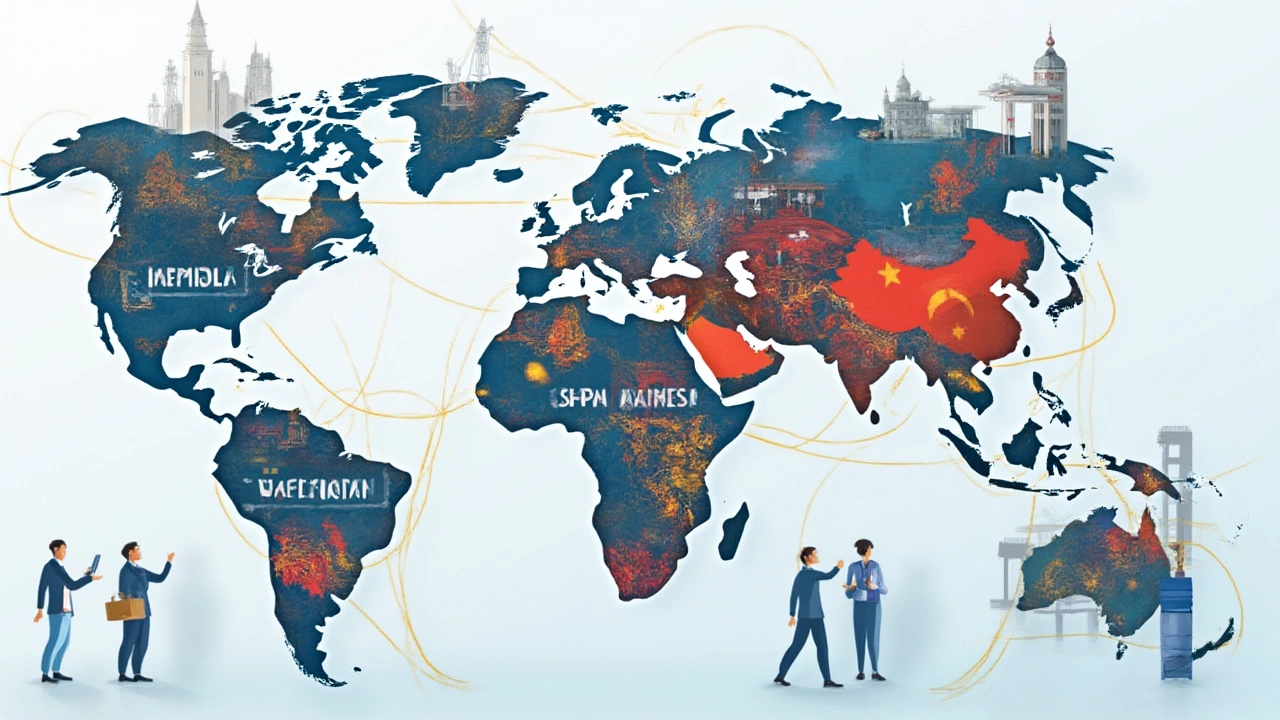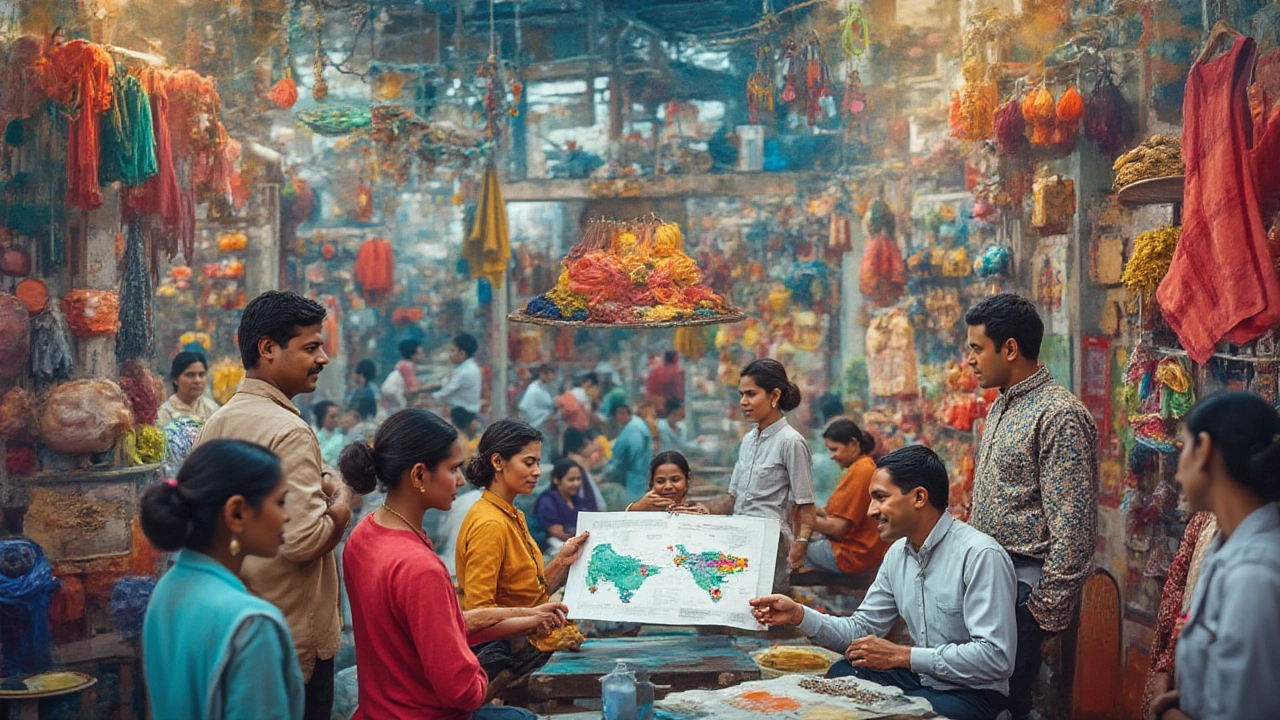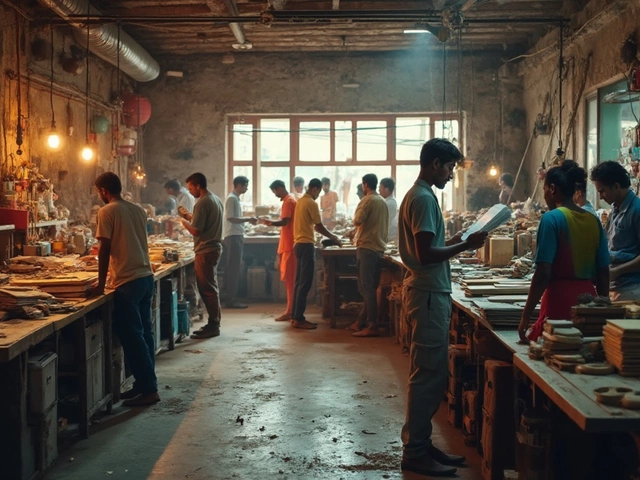If I told you the world’s favorite T-shirt wasn’t made where you think, would you believe me? The textile business is much bigger than what most people imagine. Cotton fields, high-tech factories, sleepless entrepreneurs, and containers full of new fashion trends—this world has it all. But where should you set up shop or look to source the next must-have fabric? Let’s pull back the curtain on the global textile stage and find out.
Why Country Matters: Key Factors in Choosing a Textile Hub
Choosing the right country for your textile business isn’t just about cheap labor or raw material proximity. There’s a whole web of factors to consider, where just one misstep can mean lost money or a stalled project. Think of costs—the obvious one—where everything from wages to electricity can swing your profits up or down. Ask yourself: Can you trust the logistics? Quick access to ports, reliable trucking, and stable connections can save you weeks, or even months, in delivery times. Are the laws strict or relaxed? A country’s policy on labor rights, environmental protections, and taxes will definitely shape your business experience. Let’s not ignore quality control either; some hubs boast centuries-old traditions while others rely on brand-new tech to deliver top-notch textiles. Risk, too, is different everywhere. Stable governments usually mean fewer surprises and a safer investment. Finally, the workforce itself matters—a highly skilled workforce might cost a bit more but could lift your products a class above the rest.
Want some numbers? The global textile market is expected to hit $1.5 trillion by the end of 2025. Sure, you might want to save a few dollars, but remember: quality, dependability, and innovation come at a price—and different countries balance those factors in their own unique ways.
To help you compare, check out this table of the top textile exporters by value (2024):
| Country | Export Value (USD billion) | Main Products | Notes |
|---|---|---|---|
| China | 306 | Apparel, synthetic fibers, finishing | World leader, costs rising |
| Bangladesh | 45 | Garments | Low costs, high volume exports |
| Vietnam | 42 | Apparel, footwear | Strong US/EU links, fast growth |
| India | 38 | Cotton, yarn, garments | Diverse, home to ancient textiles |
| Turkey | 16 | Fashion, home textiles | Fast delivery to Europe |
| Pakistan | 14 | Cotton, towel, denim | Strong in natural fibers |
Those aren’t just random figures—they show where the action is, and each country has its own flavor.
China: The Unshakable Giant (For Now)
No discussion about textiles starts anywhere but China. This country has been the kingpin since the ‘90s, evolving from low-cost, low-quality goods to advanced, mass-scale production. Every major brand—think Nike, Zara, Adidas—has sourced products from China at some point. The numbers don’t lie: China produced more than 50 billion pieces of apparel in 2024, with textile exports valued at a massive $306 billion last year. That’s more than the next four countries combined!
If you’re all about massive runs and speed, China barely has competition. Supply chains run like clockwork, suppliers are used to last-minute changes, and port hubs like Shanghai and Shenzhen ensure goods move fast. The government has also pushed hard to upgrade factories, so now you’re seeing computerized knitting, dyeing powered by AI, and even eco-friendly materials popping up in small batches. But, don’t just take my word for it:
"China’s textile industry remains a global powerhouse—its ability to innovate and scale sets it apart," said Dr. Sun Huaibin, spokesperson for the China National Textile and Apparel Council, in March 2025.
But hold on—a dramatic rise in wages has started to shift the game. Labor costs here are up 40% compared to a decade ago. For cheaper goods, some buyers are moving to places like Cambodia or Myanmar, but production muscle keeps China at #1. Tariffs and trade tensions with the US and EU throw in new challenges, and public pressure for sustainability means suppliers must now certify their factories by global standards. Still, if you want predictability and sheer scale, China is the safe bet—at least for now.

India: Tradition with a Modern Twist
If your thing is cotton, hand-embroidery, or unique weaves, India is the go-to spot. This country’s textile roots go back thousands of years, and those ancient skills sit shoulder-to-shoulder with modern mega-factories in Mumbai, Surat, and Tirupur. India’s real specialty is in natural fibers: it’s the world’s largest cotton producer and a major exporter of handloom and power-loom textiles. In 2024, India’s textile exports hit $38 billion, with products heading mostly to Europe, the UK, and the US.
Indian suppliers love variety. You’ll find small workshops stitching ceremonial saris right next to sprawling factories churning out jeans and T-shirts by the minute. The cost advantage is considerable—average wages are lower than in China, while utility costs remain competitive. On top of that, local government incentives offer exporters cash rebates, tax benefits, and new production parks to boost export power.
India isn’t just about cheap stuff. Major home brands source luxurious bedding and high-end organic garments here, betting on the mix of skilled labor and new “green” certifications. The country’s logistics have stepped up: ports like Mundra and Chennai are among the busiest in South Asia now. But, delivery can get bogged down by bureaucracy—delays in getting export documents or port bottlenecks aren’t unheard of.
The workforce is gigantic and growing—over 45 million people work in textiles across India. Training programs now focus on digitization, eco-friendly dyeing, and international quality standards, so you’re more likely to find a skilled supplier. For nimble brands chasing custom or creative designs, India is full of possibilities.
Bangladesh and Vietnam: Fast Fashion’s Powerhouse Pair
Look in your wardrobe—odds are that more than one shirt or pair of trousers was sewn together in Bangladesh or Vietnam. These countries are the engine room for fast fashion. Bangladesh alone accounts for nearly 7% of all the world’s apparel exports, with rapid-fire growth in the last decade. Their trick? Ridiculously low wages, paired with a focus on massive volume. In 2024, Bangladesh exported $45 billion worth of garments, and it isn’t slowing down. Textile companies here pump out millions of items per year, primarily for Western high-street brands.
Factories in Dhaka run day and night, fueled by simple designs and the endless drive to lower costs. Bangladesh’s climb has drawn both praise—for putting many to work—and criticism, especially after the tragic Rana Plaza factory collapse in 2013. But things are changing. Now, more factories meet international safety and labor standards, with many boasting LEED-certified (eco-friendly) plants. For basic clothing, undergarments, sweaters, and jeans, Bangladesh is still unbeatable on price, though delivery timings sometimes get unpredictable during monsoon season.
Vietnam is another star, grabbing a bigger slice of Western imports, especially since the US-China trade war broke out. In 2024, textile exports almost touched $42 billion. The government signed trade deals with the EU, UK, and Pacific Rim countries, opening new highway lanes for its apparel exports. Plus, power outages—once a headache—are now rare, so you can count on steady production. Vietnamese factories are known for stitching complex sportswear and footwear, making them a favorite for brands like Nike and Decathlon.
Both Bangladesh and Vietnam offer a sweet spot for brands who need reliable partners for producing modern, basic fashion at scale. But for buyers with tough quality control requirements, a bit more attention to oversight and audits is a must.

Other Top Contenders: Turkey, Pakistan, and Beyond
Not feeling Asia? Europe-adjacent Turkey has carved out its own niche in textiles, especially for fast-turnarounds to major EU markets. Turkish mills pump out high-quality denim, bed linens, and fashion-forward clothing. The delivery window blows Asian competition away—goods can get from Istanbul to Berlin in just a few days. Customs clearance is smoother, and European clients love working with culturally aligned suppliers. Turkey shipped about $16 billion worth of textiles in 2024, growing even as the local currency wobbles up and down.
Pakistan is another under-the-radar gem, especially for cotton-based textiles, towels, denim, and sports gear. Factories here combine low wages with strong craftsmanship, and many suppliers are already set up for “green” contracts. Sialkot—the world’s football manufacturing capital—makes balls for FIFA. Yet, political ups and downs, occasional blackouts, and transport hiccups keep some buyers on their toes.
Who else is worth a look? Indonesia is growing fast, focusing on sustainable textiles like bamboo viscose. Egypt, with new investments, is chasing long-staple cotton prestige. Cambodia, Ethiopia, and Myanmar remain low-cost, high-risk bets for the most cost-focused buyers, but expect some hurdles on quality and stability. Mexico is making a comeback, especially for brands targeting the North American market and looking for shorter lead times.
Before you choose, ask questions: Do I want fast access to my markets? Is labor stability important? How much tech support will I need? Every country packages its risks and benefits a bit differently, so pick what works for your vision—and your customers.






